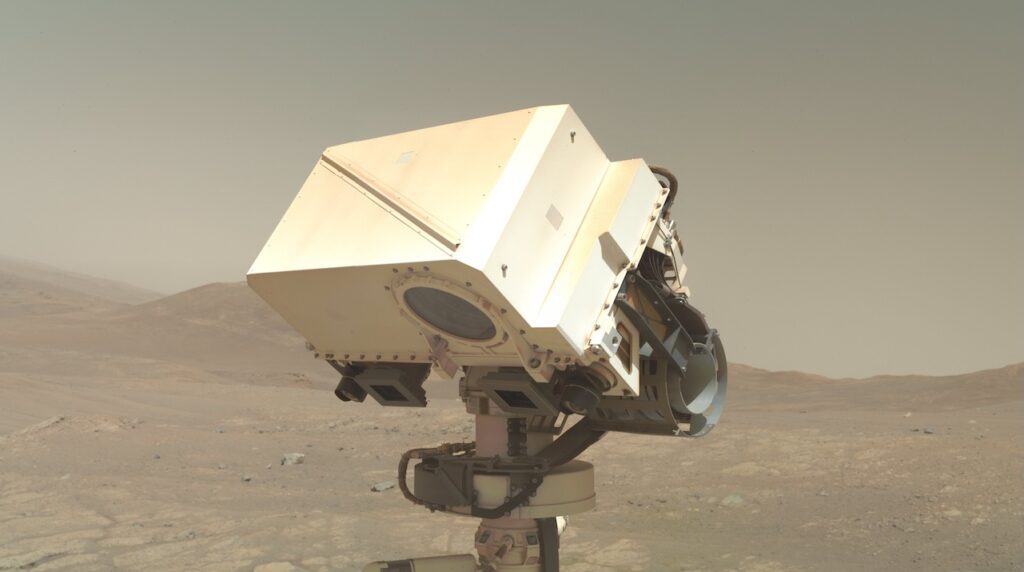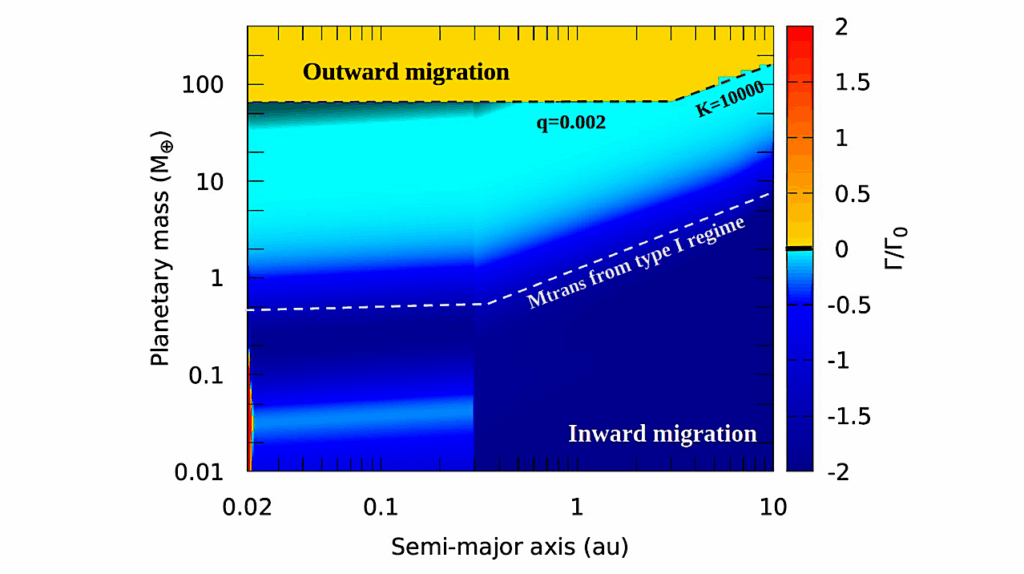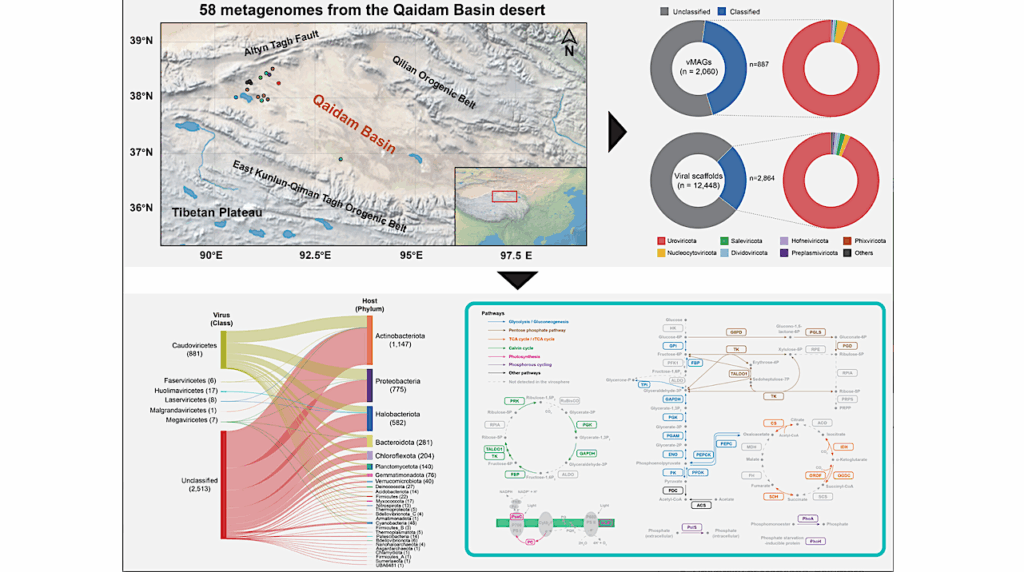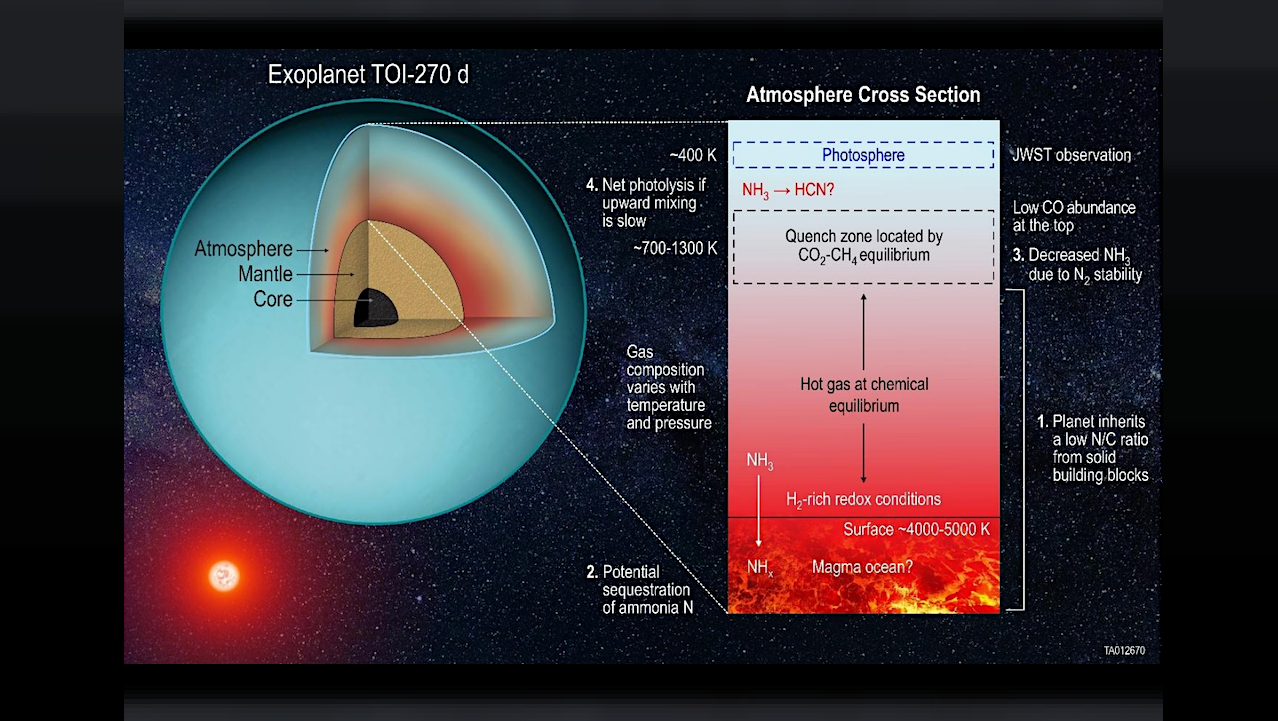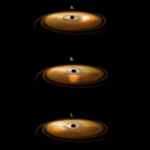Now Reading: Searching for Additional Planets in TESS Multi-Planet Systems: Testing Empirical Models Based on Kepler Data
-
01
Searching for Additional Planets in TESS Multi-Planet Systems: Testing Empirical Models Based on Kepler Data
Searching for Additional Planets in TESS Multi-Planet Systems: Testing Empirical Models Based on Kepler Data
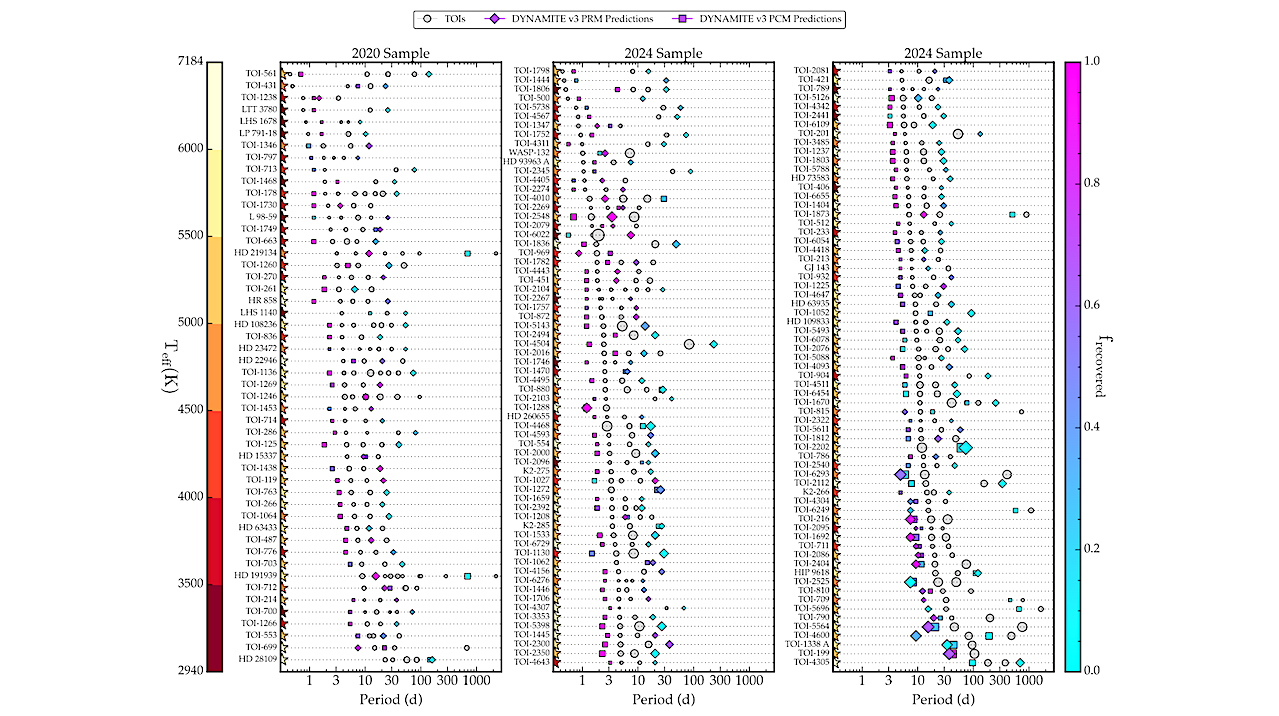

183 TESS systems with multiple planet candidates and/or confirmed planets (grey circles showing transiting planets), with the peak of the Dynamite v3 orbital period posterior distributions under the period ratio model (PRM, diamonds) and clustered period model (PCM, squares) shaded according to their recovery fraction. The PCM predictions lie at systematically shorter periods, and have higher recovery fractions than the PRM predictions. — astro-ph.EP
Multi-planet system architectures are frequently used to constrain possible formation and evolutionary pathways of observed exoplanets.
Therefore, understanding the predictive and descriptive power of empirical models of these systems is critical to understanding their formation histories.
Additionally, if empirical models can reproduce architectures over a range of scales, transit and radial velocity observations can be more easily and effectively used to inform future microlensing, astrometric, and direct imaging surveys.
We analyze 52 TESS multi-planet systems previously studied using Dynamite (Dietrich & Apai 2020), who used TESS data alongside empirical models based on Kepler planets to predict additional planets in each system. We analyze additional TESS data to search for these predicted planets. We thereby evaluate the degree to which these models can be used to predict planets in TESS multi-planet systems.
Specifically, we study whether a period ratio method or clustered period model is more predictive. We find that the period ratio model predictions are most consistent with the planets discovered since 2020, accounting for detection sensitivity. However, neither model is highly predictive, highlighting the need for additional data and nuanced models to describe the full population. Improved eccentricity and dynamical stability prescriptions incorporated into Dynamite provide a modest improvement in the prediction accuracy.
We also find that the current sample of 183 TESS multi-planet systems are are highly dynamically packed, and appear truncated relative to detection biases. These attributes are consistent with the Kepler sample, and suggest a highly efficient formation process.

52 TESS systems in the 2020 sample with multiple planets and/or confirmed planets (grey circles), with the peak of the Dynamite v1 orbital period posterior distributions reported in D20 under the period ratio model (PRM, diamonds) and clustered period model (PCM, squares) shaded according to their recovery fraction. The PCM predictions lie at systematically shorter periods, and have higher recovery fractions than the PRM predictions. Planets and planet candidates discovered since 2020 are shown by green circles (outlined in black if new planets have measured radii). — astro-ph.EP
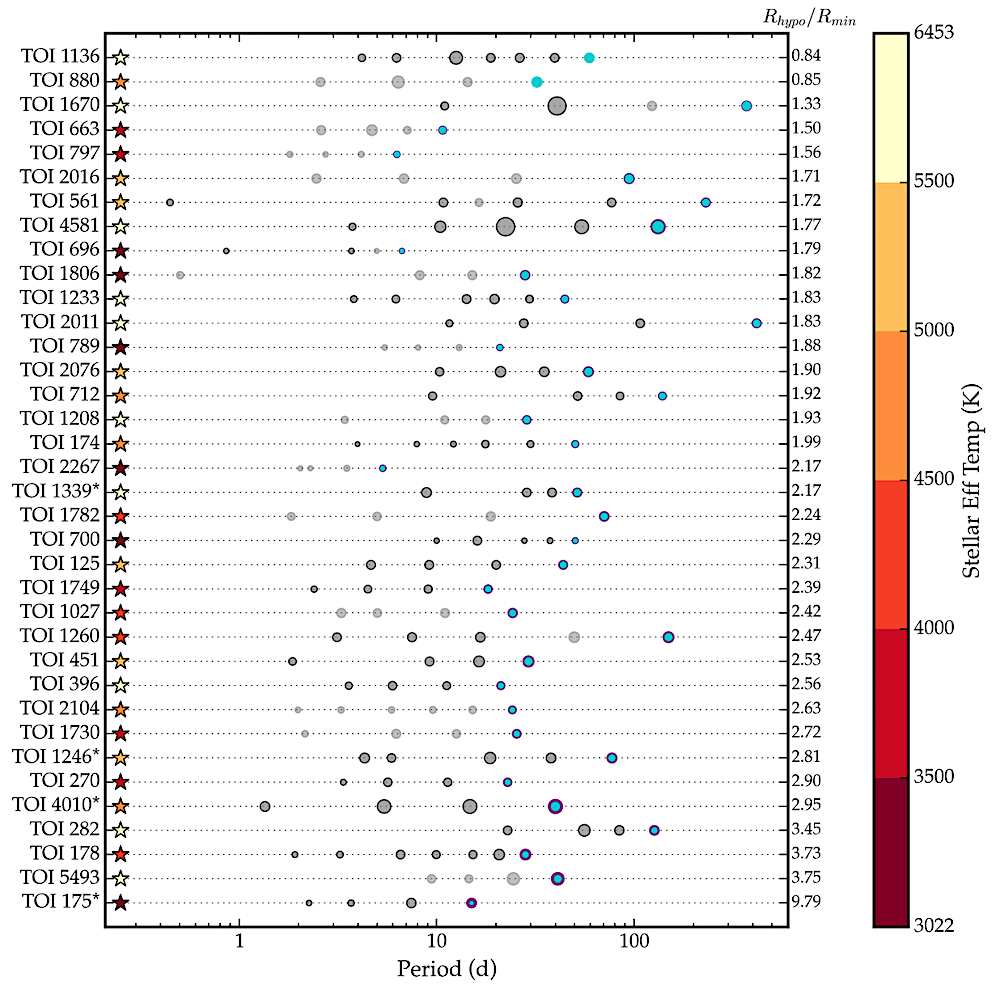
Transiting planets (grey, outlined in black) and planet candidates (grey, no outlines) in the 36 TESS systems with 3 or more planets or planet candidates. Systems with additional non-transiting confirmed planets are indicated with a single asterisk. All points are scaled according to planet radius. A putative outer planet (purple) is included for each system, with a hypothetical radius equal to that of the outermost transiting planet in the system. The minimum detectable radius at the hypothetical planet’s orbital period is shown in blue. On the right of the plot, the ratio between the hypothetical and minimum detectable radii for the putative planets is shown. On the left of the plot, the effective temperature of the stellar host is shown in the colour of a star-shaped marker. If the purple putative planet is not visible (as is the case for TOIs 1136 and 880), the putative planet is smaller than the minimum detectable radius, and thus would not be detectable in the current TESS light curve. — astro-ph.EP
Emma V. Turtelboom, Jamie Dietrich, Courtney D. Dressing, Caleb K. Harada
Comments: Accepted to AJ
Subjects: Earth and Planetary Astrophysics (astro-ph.EP); Instrumentation and Methods for Astrophysics (astro-ph.IM)
Cite as: arXiv:2409.03852 [astro-ph.EP] (or arXiv:2409.03852v2 [astro-ph.EP] for this version)
https://doi.org/10.48550/arXiv.2409.03852
Focus to learn more
Submission history
From: Emma Turtelboom
[v1] Thu, 5 Sep 2024 18:29:00 UTC (1,434 KB)
[v2] Tue, 15 Apr 2025 19:00:15 UTC (1,900 KB)
https://arxiv.org/abs/2409.03852
Astrobiology,
Stay Informed With the Latest & Most Important News
Previous Post
Next Post
-
 012024 in Review: Highlights from NASA in Silicon Valley
012024 in Review: Highlights from NASA in Silicon Valley -
 02Panasonic Leica Summilux DG 15mm f/1.7 ASPH review
02Panasonic Leica Summilux DG 15mm f/1.7 ASPH review -
 03From Polymerization-Enabled Folding and Assembly to Chemical Evolution: Key Processes for Emergence of Functional Polymers in the Origin of Life
03From Polymerization-Enabled Folding and Assembly to Chemical Evolution: Key Processes for Emergence of Functional Polymers in the Origin of Life -
 04How New NASA, India Earth Satellite NISAR Will See Earth
04How New NASA, India Earth Satellite NISAR Will See Earth -
 05And Thus Begins A New Year For Life On Earth
05And Thus Begins A New Year For Life On Earth -
 06Astronomy Activation Ambassadors: A New Era
06Astronomy Activation Ambassadors: A New Era -
07SpaceX launch surge helps set new global launch record in 2024












